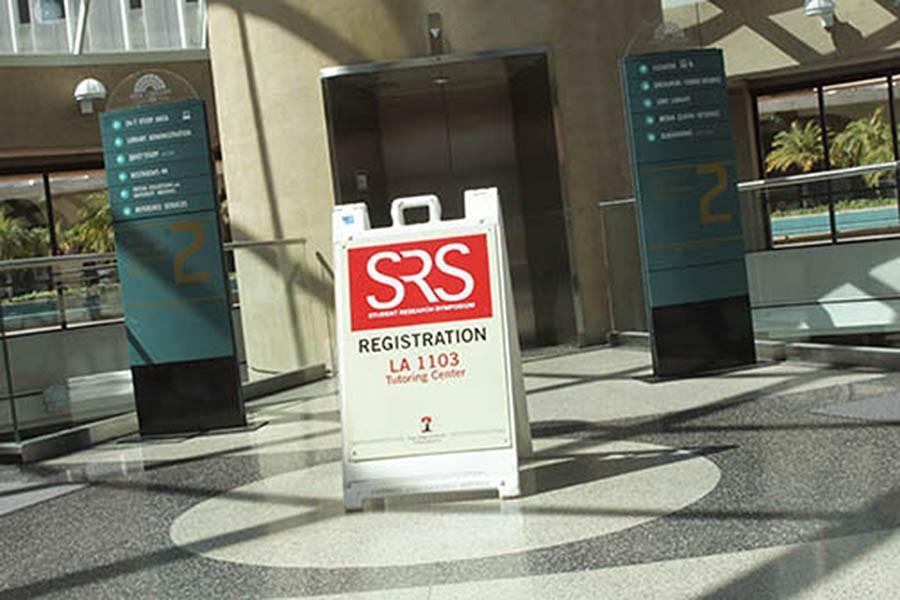San Diego State’s ninth annual Student Research Symposium will include a record number of 551 students this year.
Ashley Rubio, the symposium’s coordinator, said the record number of applicants is an indication of the school’s push for more research. Last year the SRS included 475 students.
“So if we’re going up, that means the research in the university should also going up, because that means there’s more opportunities for students to have money to do research,” Rubio said.
The symposium, which showcases undergraduate and graduate student research from all fields and majors, will take place on March 4 and 5.
Areas of research will range from all majors and fields, from STEM research projects to the creative arts. Ten President’s Awards will be given out at the event, and the winners will go on to compete at the CSU Student Research Competition in May.
Last year was the symposium’s first time including a creative arts portion in the event, and it saw a huge turnout, Rubio said. Although STEM fields still dominate the number of presentations, the inclusion of humanities research is an important part of SRS.
“When you think about it, everything deals with research,” Rubio said.
The symposium is free for students to participate in and it includes a mix of undergraduate, graduate and Ph.D. students. Although there is currently no cap to the number of participants, if the numbers keep on increasing entry to the symposium may become more competitive, Rubio said.
“My philosophy is that this is some of our students first opportunity to participate in a symposium, so we don’t want to max it out just yet,” Rubio said.
The SRS offers students experience in presenting their work, as well as an opportunity for community involvement.
“It’s a great way for students to show the type of work that’s being done here at the university,” Rubio said.
Environmental engineering senior and first-time SRS presenter Christina Stewart said she appreciates the opportunity to present her work on campus.
“It’s a good cultivating environment for students,” Stewart said. “You definitely feel way more relaxed about it, but you still can be proud that you’re still representing your school at your school.”
Last December, Stewart presented at the American Geophysical Union Conference and found the experience slightly daunting.
“There were at least 20,000 people at (that) event, whereas this one at SDSU I already feel relaxed about it,” she said.
Biology senior Kevin Green is presenting at the symposium for the second year in a row. The symposium is a great opportunity to get practice for the future, he said.
“It’s a very safe and open environment to be able to express your ideas and to talk to people who have been in the field for ages, or talk to people who aren’t in the field at all,” he said.
Although SDSU is a small research school, it’s one of the leading institutes in small research, Green said.
“I’ve worked in two labs at SDSU, and what I really enjoyed about it was that they aren’t these massive huge labs where you kind of get lost,” he said.









